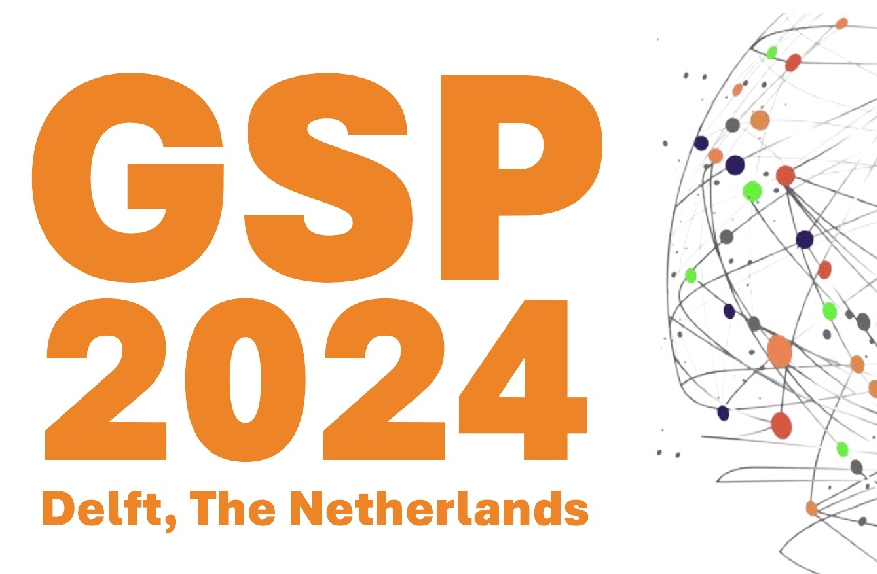Agenda
PhD Thesis Defence
- Monday, 25 January 2016
- 12:30-14:30
- Aula Senaatszaal
Sparse Sensing for Statistical Inference: Theory, Algorithms, and Applications
Sundeep Prabhakar Chepuri
In today's society we are flooded with massive volumes of data of the order of a billion gigabytes on a daily basis from pervasive sensors. It is becoming increasingly challenging to locally store and transport the acquired data to a central location for signal/data processing (i.e., for inference). Consequently, most of the data is discarded blindly, causing serious performance loss. It is evident that there is an urgent need for developing unconventional sensing mechanisms to extract as much information as possible yet collecting fewer data. Thus, reducing the costs of sensing as well as the related memory and bandwidth requirements.
The first aim of this thesis is to develop theory and algorithms for data reduction. We develop a data reduction tool called sparse sensing, which consists of a deterministic and structured sensing function (guided by a sparse vector) that is optimally designed to achieve a desired inference performance with the reduced number of data samples. The first part of this thesis is dedicated to the development of sparse sensing models and convex programs to efficiently design sparse sensing functions.
Sparse sensing offers a number of advantages over compressed sensing (a state-of-the-art data reduction method for sparse signal recovery). One of the major differences is that in sparse sensing the underlying signals need not be sparse. This allows us to consider general signal processing tasks (not just sparse signal recovery) under the proposed sparse sensing framework. Specifically, we focus on fundamental statistical inference tasks, like estimation, filtering, and detection. In essence, we present topics that transform classical (e.g., random or uniform) sensing methods to low-cost data acquisition mechanisms tailored for specific inference tasks. The developed framework can be applied to sensor selection, sensor placement, or sensor scheduling, for example.
In the second part of this thesis, we focus on some applications related to distributed sampling using sensor networks. Recent advances in wireless sensor technology have enabled the usage of sensors to connect almost everything as a network. Sensor networks can be used as a spatial sampling device, that is, to faithfully represent distributed signals (e.g., a spatially varying phenomenon such as a temperature field). On top of that, the distributed signals can exist in space and time, where the temporal sampling is achieved using the sensor's analog-to-digital converters, for example. Each sensor has an independent sample clock, and its stability essentially determines the alignment of the temporal sampling grid across the sensors. Due to imperfection in the oscillators, the sample clocks drift from each other, resulting in the misalignment of the temporal sampling grids. To overcome this issue, we devise a mechanism to distribute the sample clock wirelessly. Specifically, we perform wireless clock synchronization based on the time-of-flight measurements of broadcast messages. In addition, clock synchronization also plays a central role in other time-based sensor network applications such as localization. Localization is increasingly gaining popularity in many applications, especially for monitoring environments beyond human reach, e.g., using robots or drones with several sensor units mounted on it. Consequently we now have to localize more than one sensor or even localize the whole sensing platform. Therefore, we extend the classical localization paradigm to localize a (rigid) sensing platform by exploiting the knowledge of the sensor placement on the platform. In particular, we develop algorithms for rigid body localization, i.e., for estimating the position and orientation of the rigid platform using distance measurements.
Additional information ...
Agenda
- Tue, 30 Apr 2024
- 10:00
- HB18.090
MSc SPS Thesis presentation
Wim Kok
A SystemC SNN model for power trace generation
- Mon, 6 May 2024
- 12:30
- Aula Senaatszaal
PhD Thesis Defence

Christoph Manss
Multi-agent exploration under sparsity constraints
- Tue, 21 May 2024
- 10:00
- Aula Senaatszaal
PhD Thesis Defence

Wangyang Yu
- 27 -- 28 May 2024
- Aula, TU Delft
Conferences

44th Benelux Symposium on Information Theory and Signal Processing (SITB'24, Delft)
- Tue, 18 Jun 2024
- 15:00
- Aula Senaatszaal
PhD Thesis Defence

Hanie Moghaddasi
Model-based feature engineering of atrial fibrillation
- Mon, 24 Jun 2024
- Aula, TU Delft
Conferences
